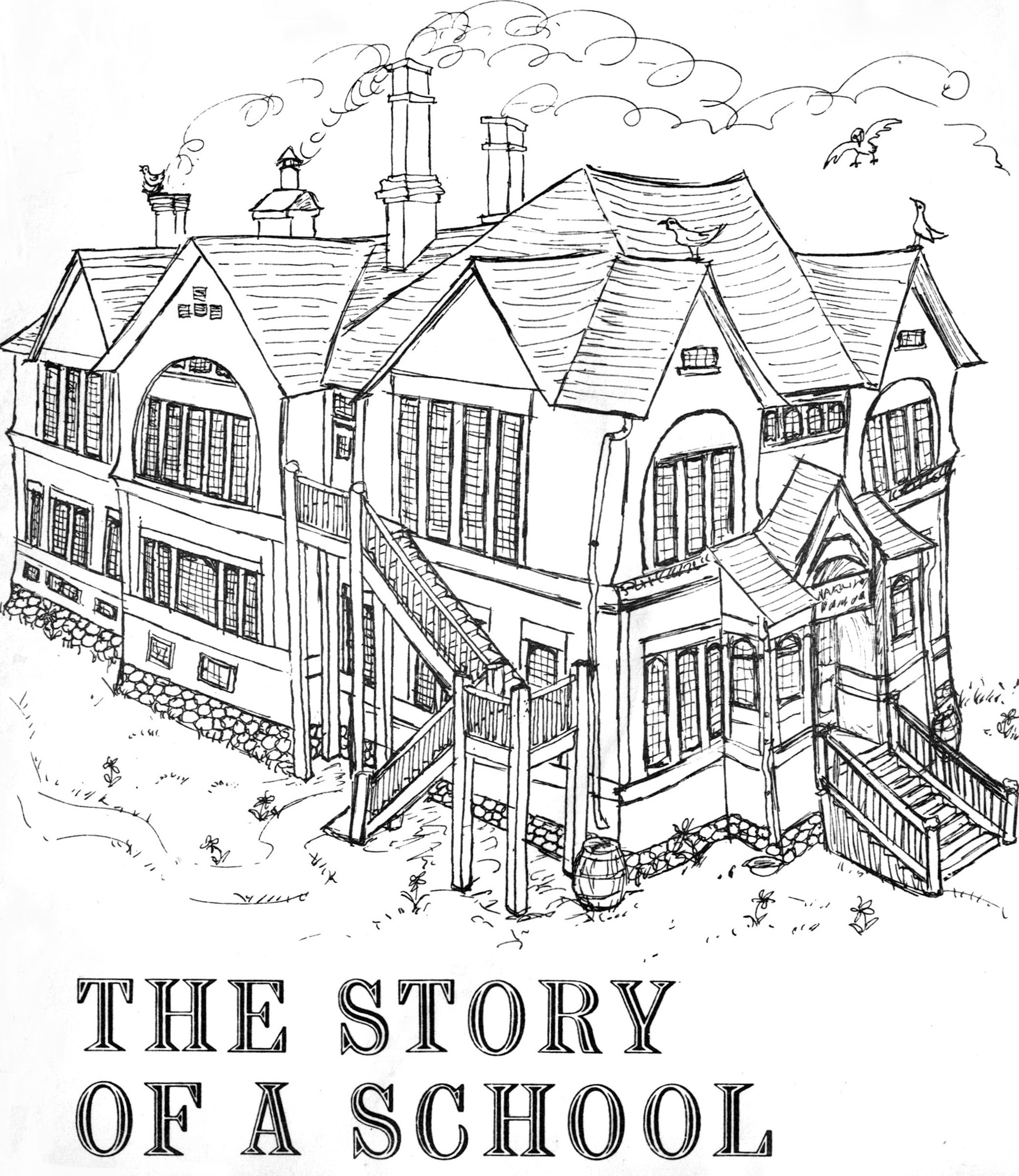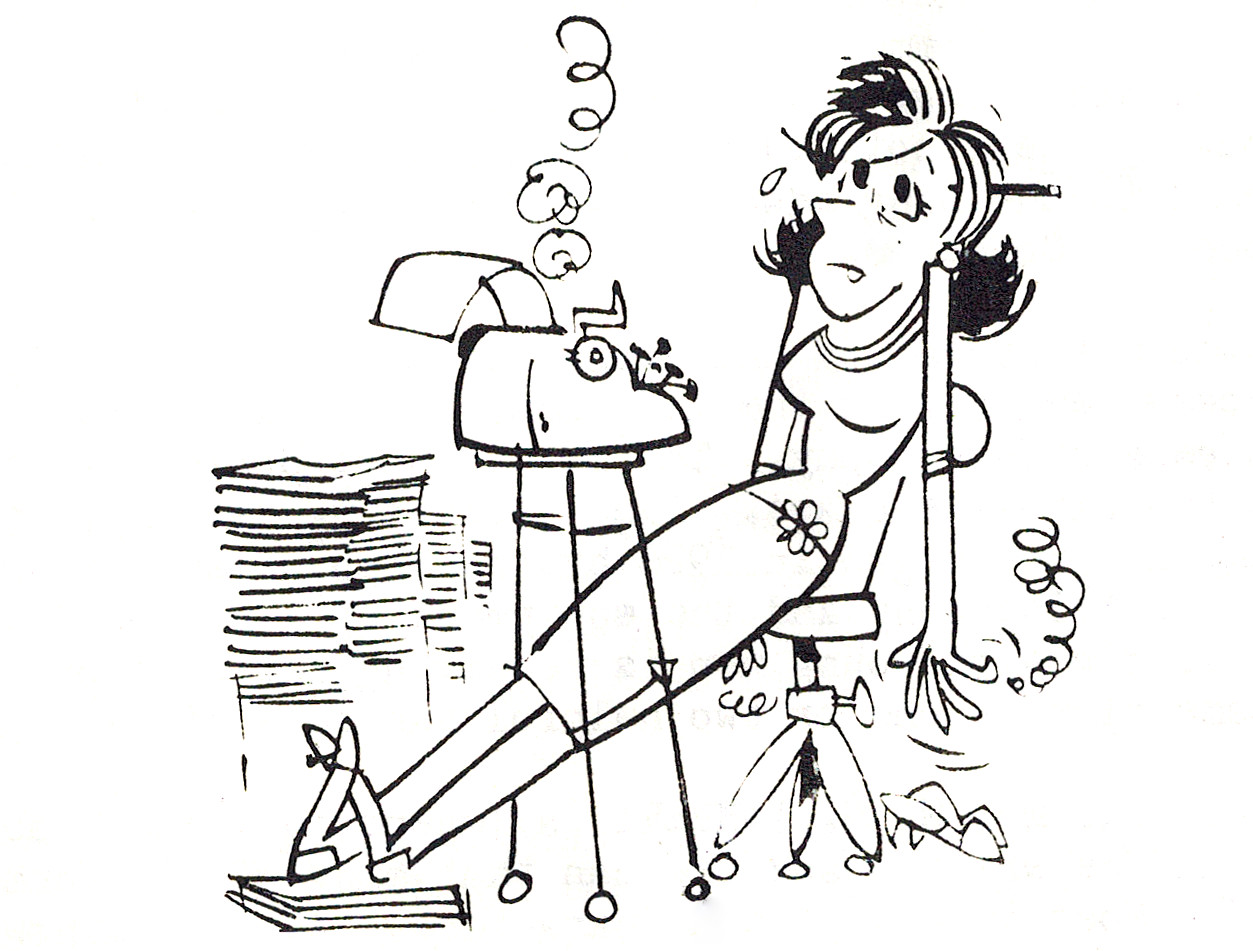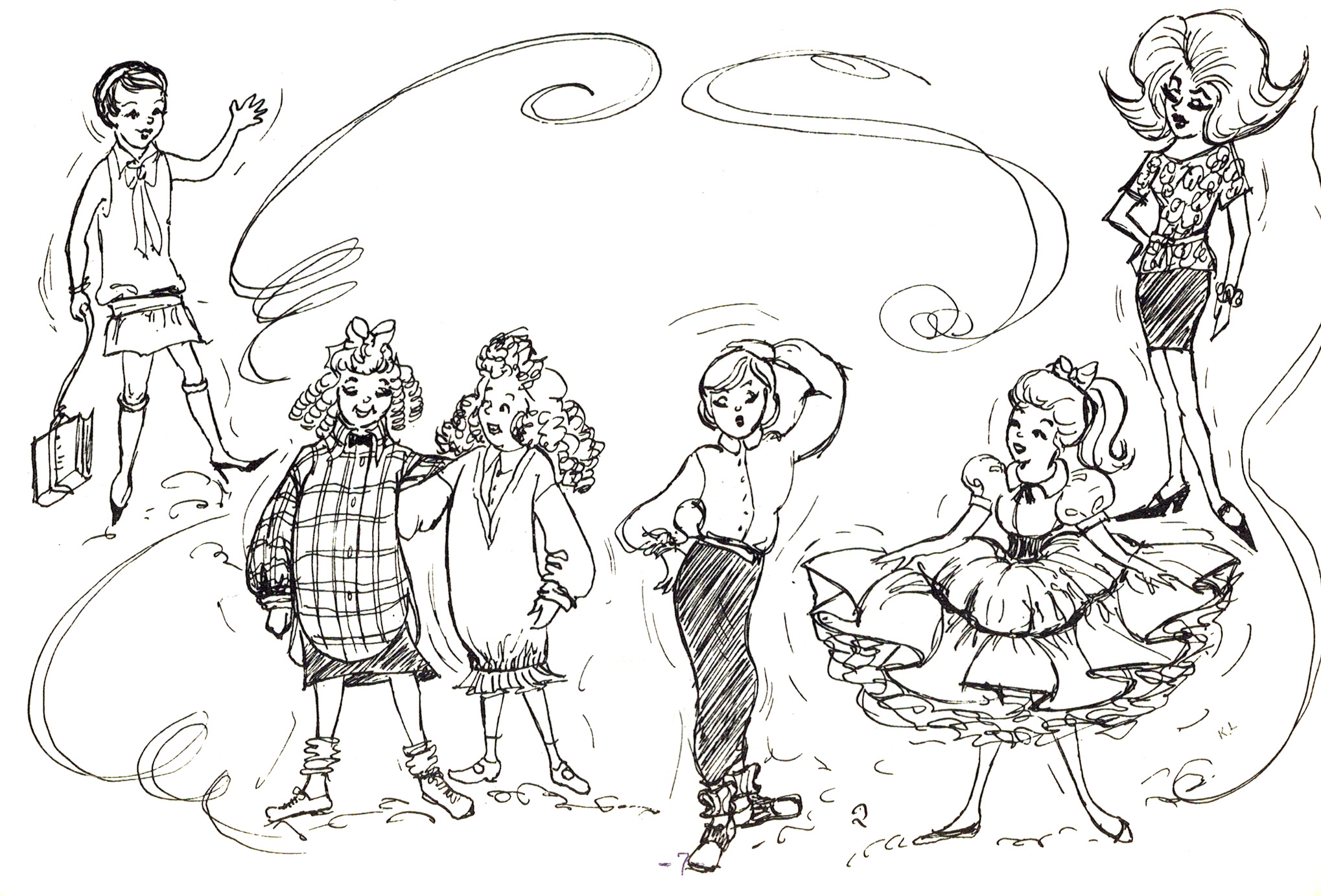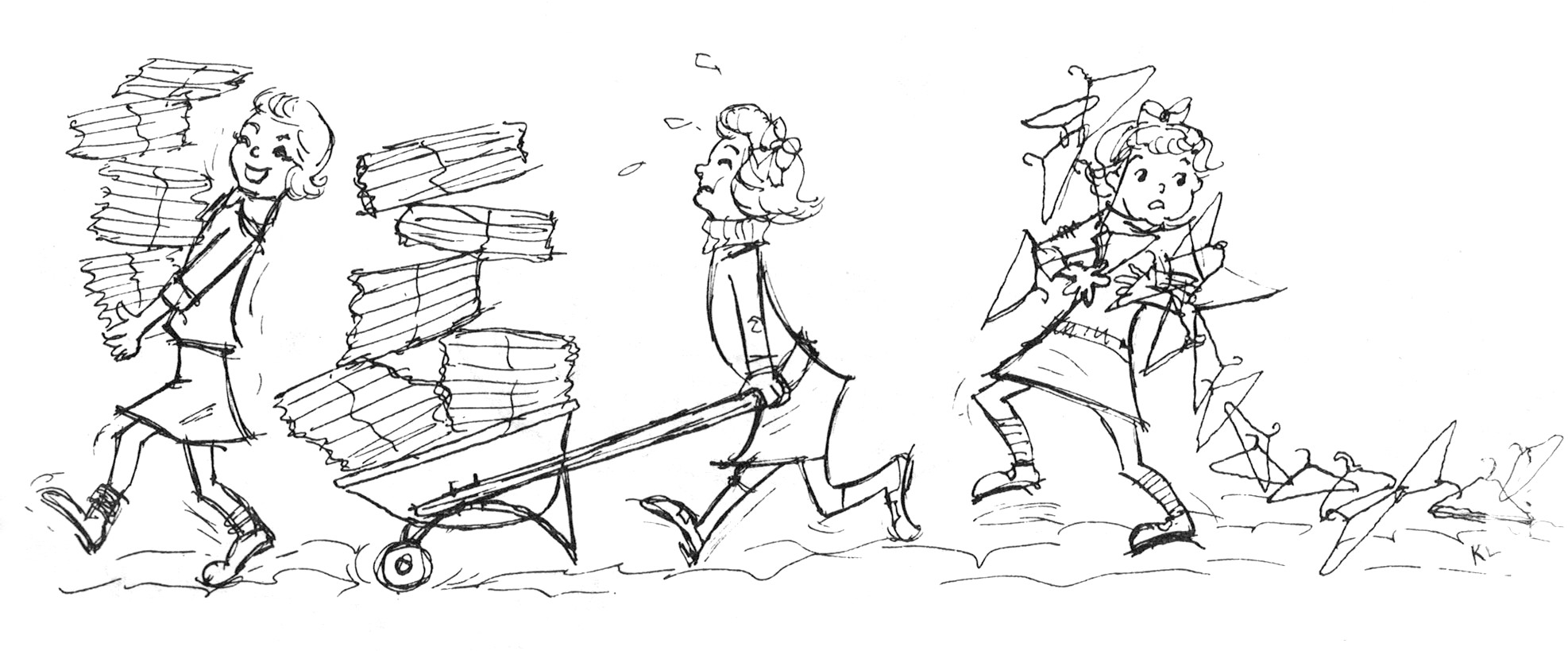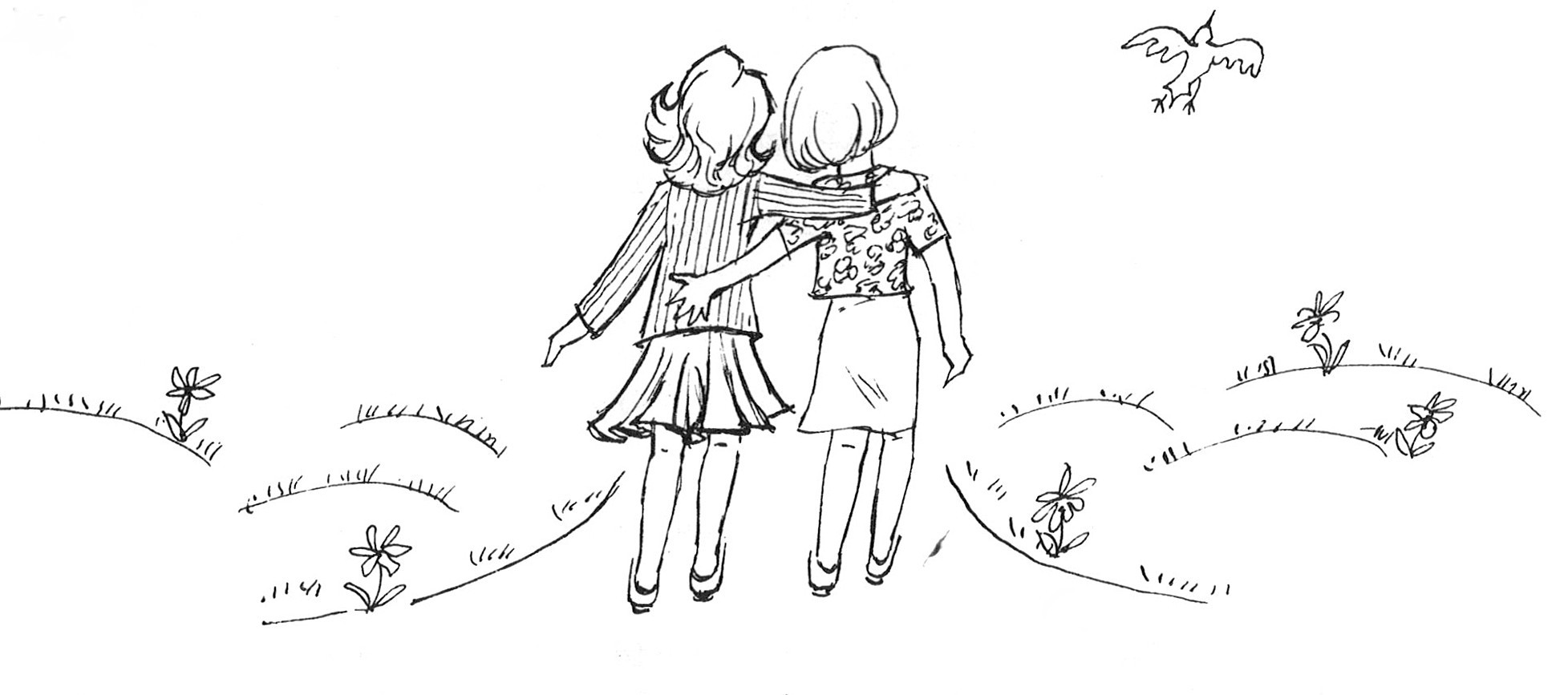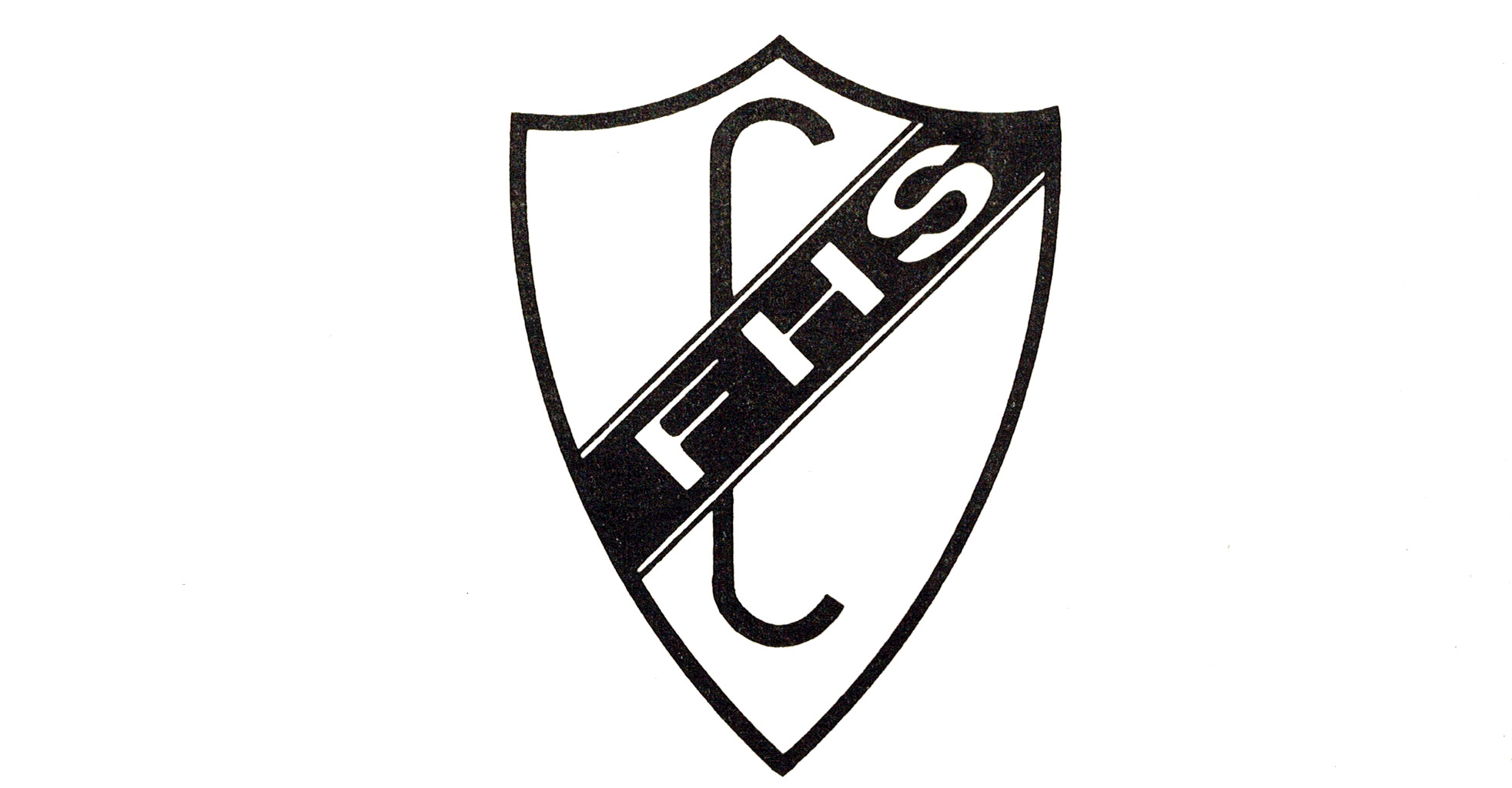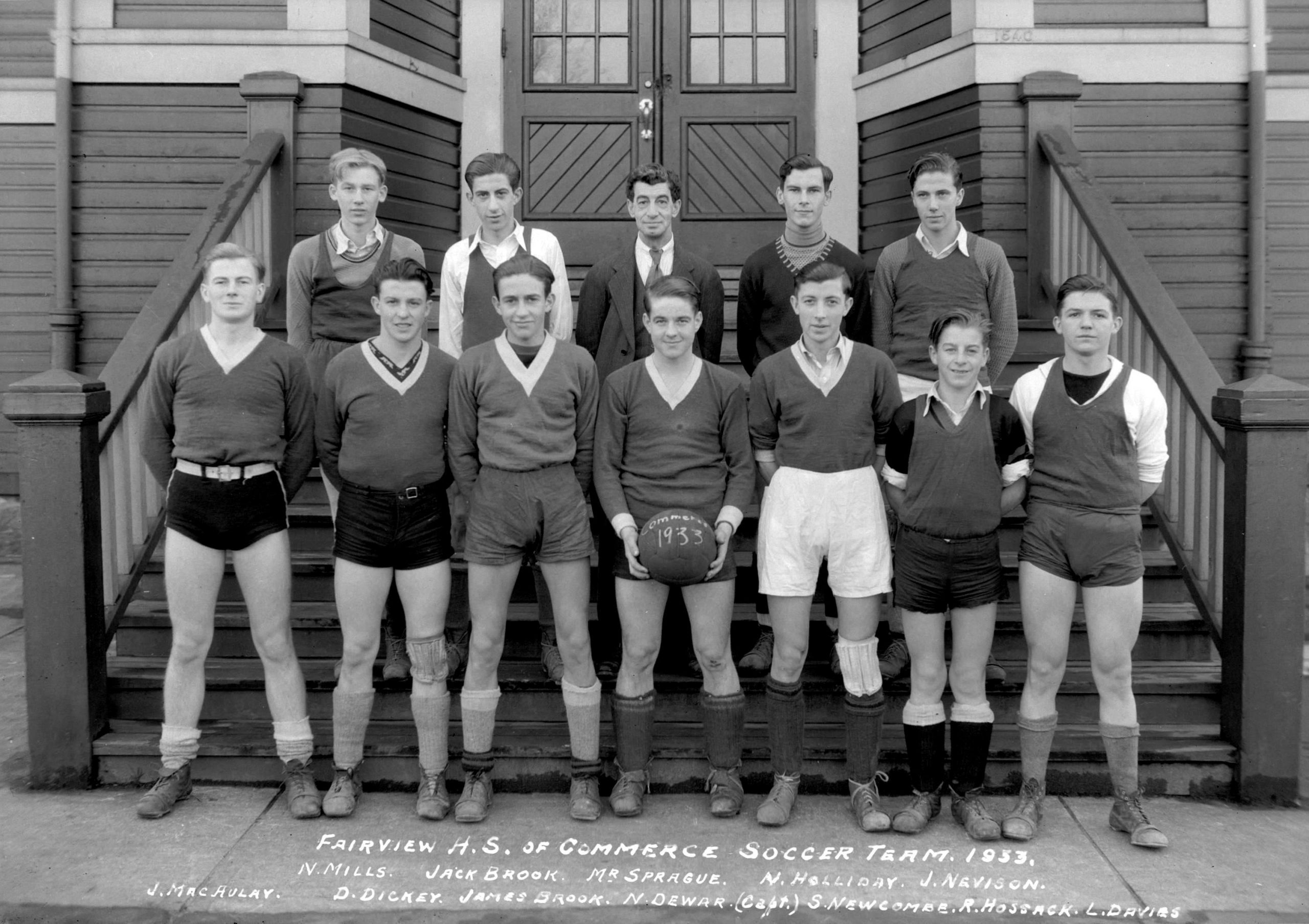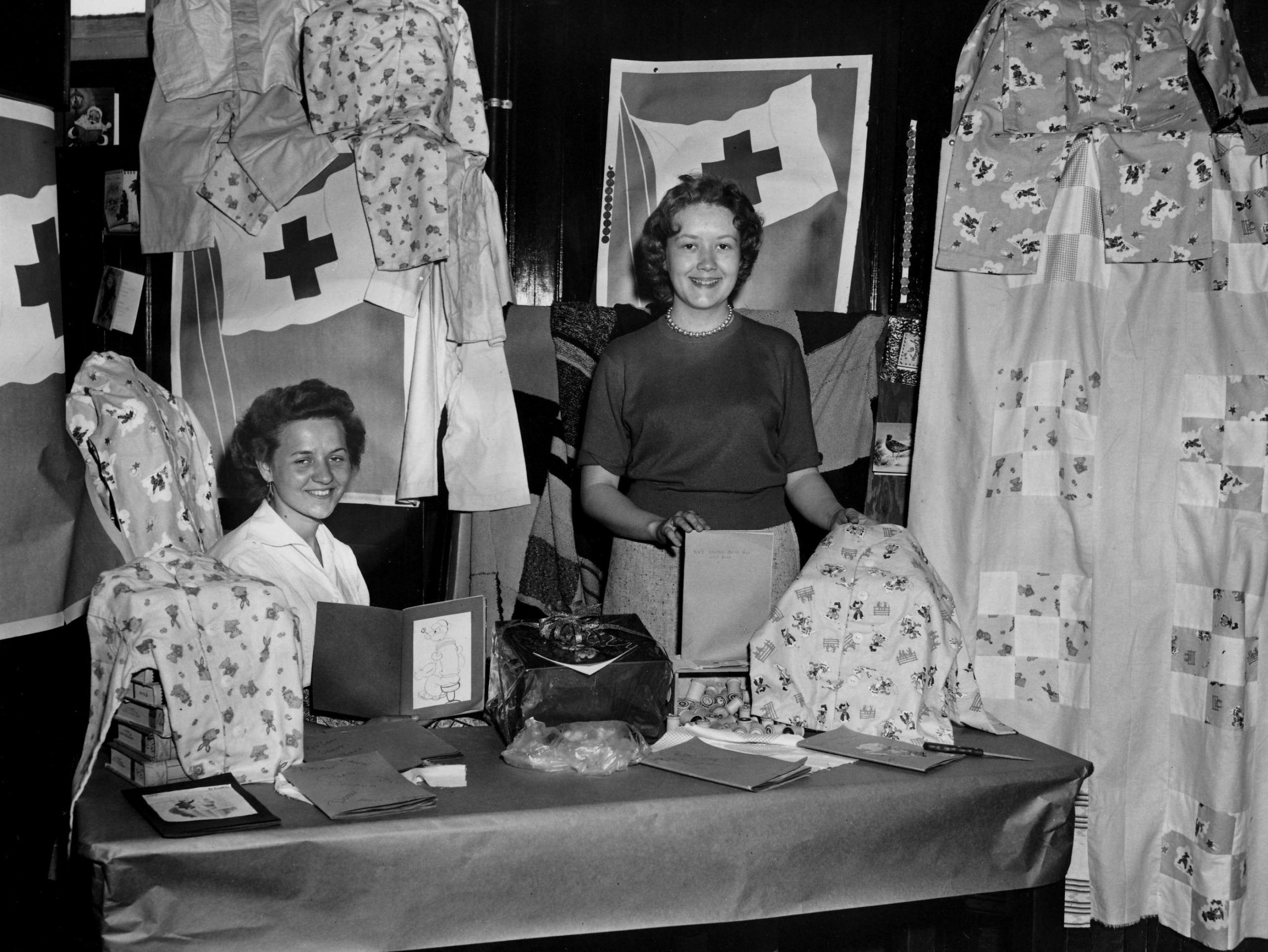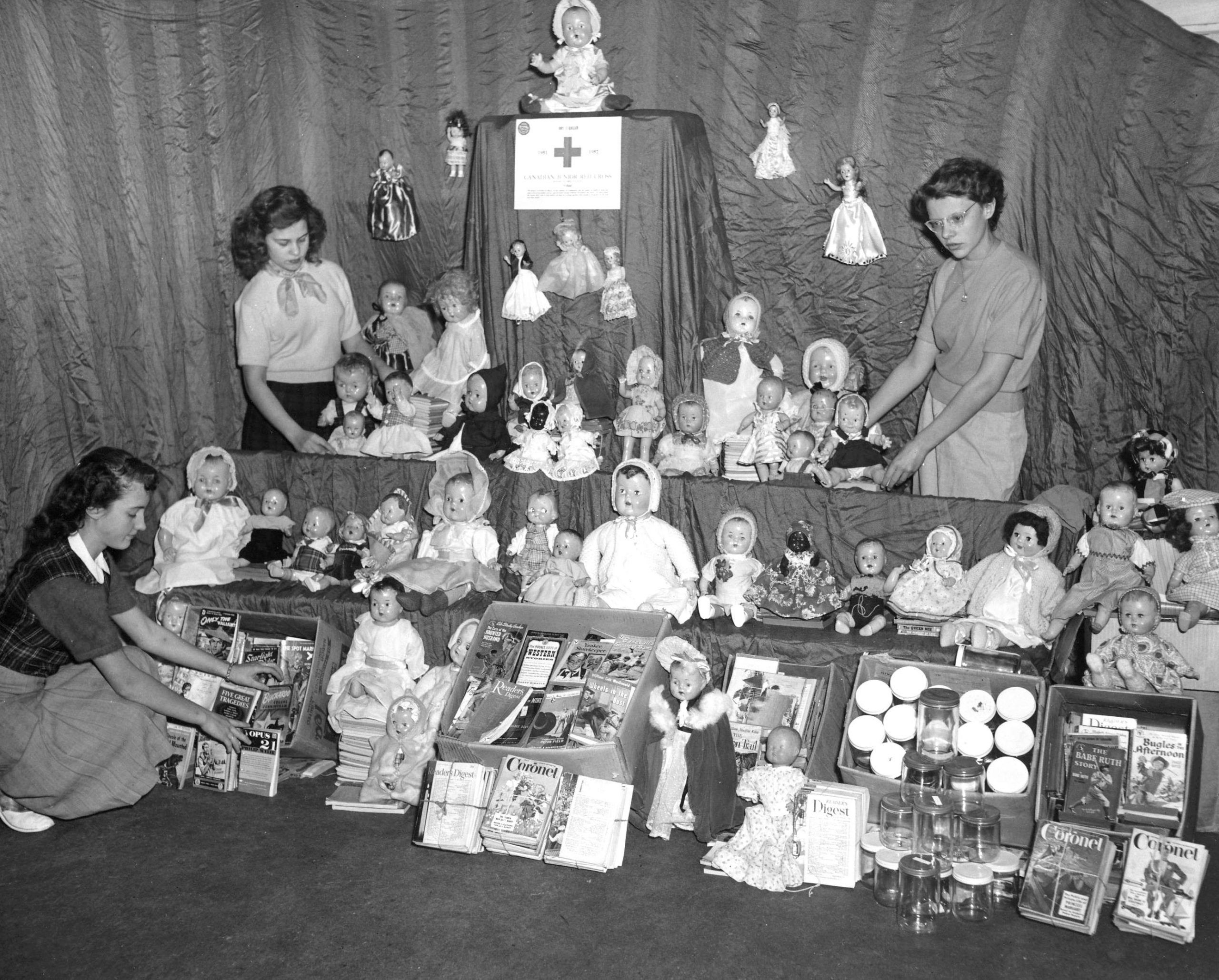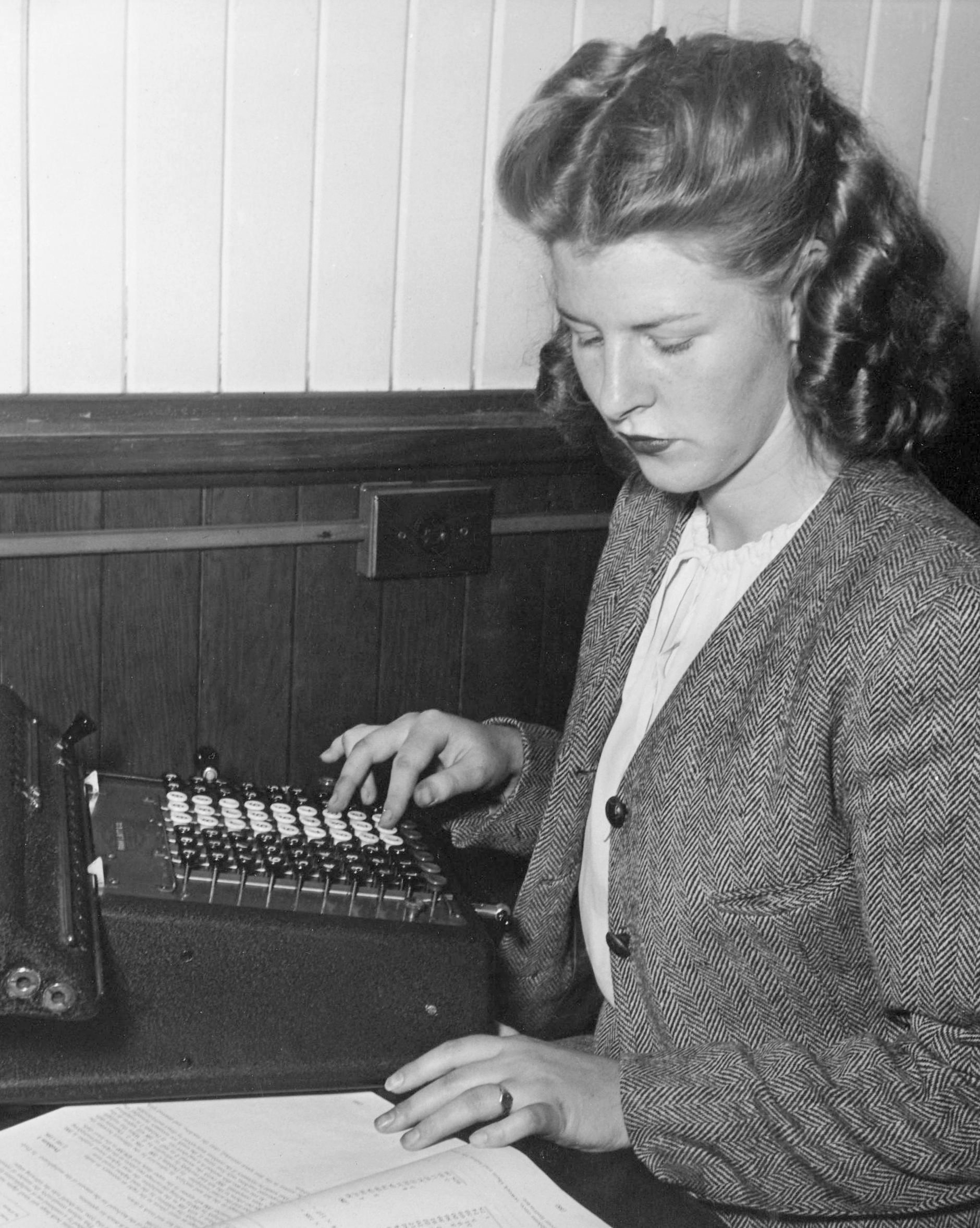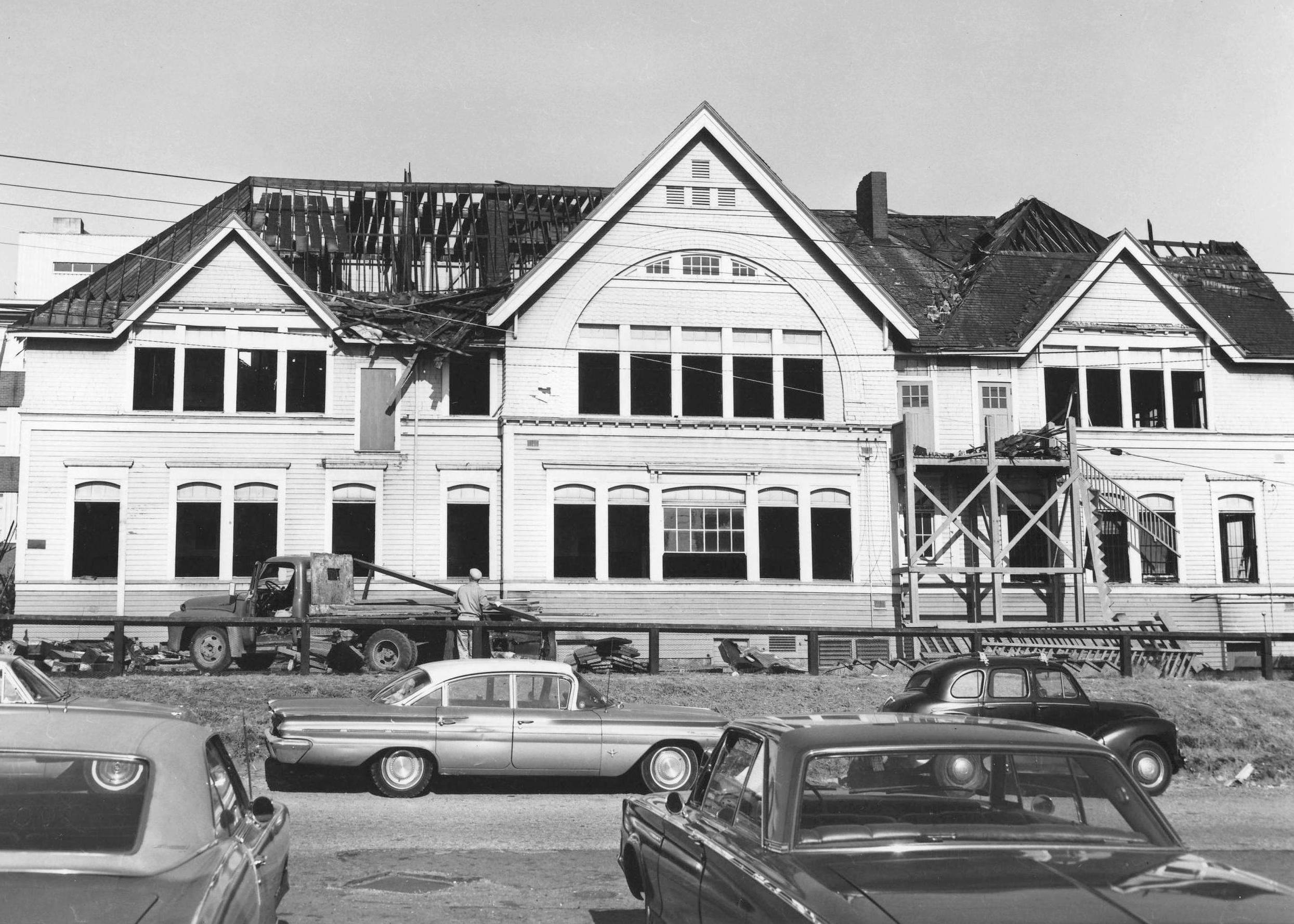The Story of Fairview High School of Commerce
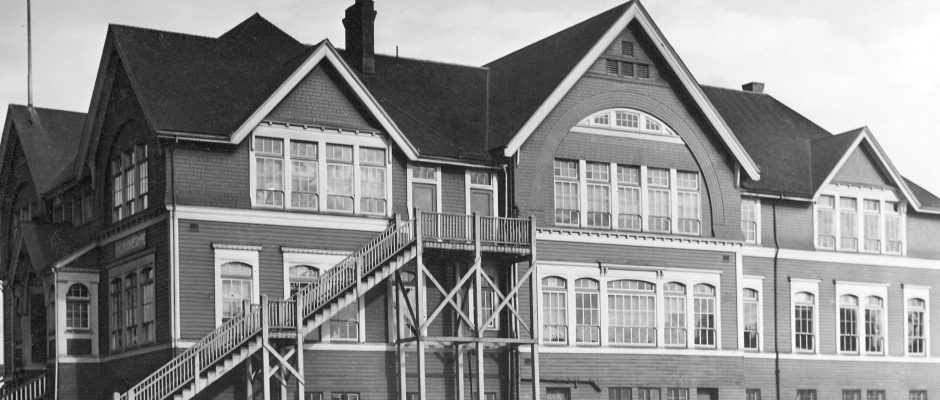
by Helen Weston (Wickstrom, 1945)
A collection of fact and fun which tells, in part, the “STORY OF FAIRVIEW”
For the Reunion of Teachers and Students
Before the Final Closing
FAIRVIEW HIGH SCHOOL OF COMMERCE
1540 West Broadway
Vancouver, B. C.
MAY 25, 1963
DEDICATION
Let’s give a loud cheer for the Class of ’18, And every class thereafter; A sigh for the memories of our growing-up, Remember the struggles? the laughter?
And here’s to our teachers–a truly fine staff, Who laboured to earn our promotion; They all gave so much of themselves to help us, They’re remembered with lasting devotion.
And here’s to a building, so old and so dear, Whose service is now to be finished; The fond memories that it still holds for us Go on through the years undiminished.
CONTENTS
Chapter I – A School is Born
Chapter II – How It Grew
Chapter III – Cast of Characters
Chapter IV – Fashions Through the Years.
Chapter V – Fun Through the Years.
Chapter VI – It Wasn’t All fun
Chapter VII – And Now, Farewell
CHAPTER ONE A SCHOOL IS BORN
In 1918, when Vancouver wasn’t much more than an infant herself, a newcomer to the school system came upon the scene. A lusty, noisy, active offspring it was destined to become–and one of which Vancouver and its Board of School. Trustees can well be proud.
In September of that year, the Commercial Department of King Edward High School moved, as an independent unit, to the Cecil Rhodes Elementary School building, with approximately two hundred pupils and a staff of six teachers, under the principalship of Mr STANLEY MATHEWS.
The Vancouver School Board report for that year says, “In the Cecil Rhodes Commercial High School we have this year opened our first high school devoted to business instruction. This is a step in the right direction, and there is every indication that before very long this work will demand a building of its own.”
The “building of its own” became a reality in 1927, when the old Fairview Elementary School–now so familiar to most of us–which then occupied the entire block at Broadway and Granville, was turned over to the High School of Commerce. But before this occurred other changes took place. In 1929 the name of the original school was altered to Cecil Rhodes High School of Commerce, and Mr. W. K. BEECH, the remarkable man whose foresight and energy led to the great expansion of commercial training in Vancouver, was appointed its principal. The following year the school returned to the King Edward High School building and became simply the High School of Commerce.
When the move to Broadway and Granville was made in 1927, an Annex of several rooms remained in the King Edward building, including Room 19, devoted to Wireless Telegraphy. The 1928 School Board Report has this to say about the wireless class. “An interesting development in the High School of Commerce was begun in 1926 by the appointment of an up-to-date teacher in radio-telegraphy and the equipment of a suitable laboratory. An enthusiastic class of young men is receiving instruction in this field and at the same time in one or ‘two helpful subjects of the business course.”
The teacher was Mr. W. H. LAMBERT, a legend in himself about whom a whole book could be written and the man that many of his former students think of as “My Most Unforgettable Character”. After all, how could you forget the sort of man who stripped to the waist, hopped into his canoe, and paddled regularly to Victoria, stopping enroute only to brew tea in the bottom of the boat!
CHAPTER TWO HOW IT GREW
The lusty young infant of 1918 became a sturdy Child. The 200 pupils grew to 850 by 1932. They were housed at that time in three buildings. The 11 classrooms of the main building, plus its pint-size 27 by 54-foot gymnasium at the far corner of the school yard, could not accommodate all the young people wishing to take advantage of high school commercial courses. Six classrooms were in use at King Edward High School and three more were taken over at the Seaviw School, which used to stand at Fourth and Yew in Kitsilano district, Classes with enrollments of 45 or more pupils were common. Eventually, the entire Seaview School was used as a High School of Commerce Annex.
In the 30’s commercial education was so popular a part of the public-school system that a second high school devoted to it came into being. To differentiate between the two schools, the word FAIRVIEW was added to HIGH SCHOOL OF COMMERCE, and she achieved the name by which she has been known so long.
For several years, in addition to a four-year high school program, the school offered special one-year commercial courses to students who already had matriculation or higher standing. Eventually, special one-year courses were added for students with Grade X or XI standing.
Many pupils were attracted because they could obtain training in business machines. The school boasts one of the best-equipped rooms for this work in the province. Almost every type of office equipment used in modern business practice is represented.
Until June of 1929 graduates were snapped up by local business firms, and there was no problem in placing them. Then came the depression with its attendant unemployment, and only the very best students could get jobs. The Second World War and the following years of high employment and prosperity changed the picture. However, the school’s placement service remains a valuable feature. It specializes in assisting young people to find their first jobs–positions suitable to their personal needs and scholastic attainments.
The success of commercial education in the secondary school. system is attested by the fact that all the city’s high schools now include departments for this work. As these departments have grown and pupils have attended the high schools in their own areas for training in commercial subjects, the Fairview High School of Commerce has decreased in size and become supplanted, so that its closure and the dispersal of its pupils and staff are to take place at the end of this school term.
CHAPTER THREE CAST OF CHARACTERS
Fairview has never been short of “characters”, and high on that list is the staff itself. They have been a remarkable lot, and we are convinced, very special types of teachers.
What was a Fairview teacher? Well, a Fairview teacher was a really dedicated person who made life take on extra meaning for us. They gave us inspiration in so many ways that have lasted long past their years of directing us. These brave ones took rash, brash, cheeky brats and helped turn them out into thinking, feeling, caring people. They took some lazy, unambitious ne’er-do-wells and made them take pride in themselves and their work so that they could take their places in the business world and make some contribution to it. Sometimes they took a shy, retiring conformist and with a searching look, found unsuspected qualities that could be developed with praise, encouragement, and understanding, and thus gave such a one hope, and self-respect, and confidence. Sometimes they took the promising ones and added a touch of humility, understanding, and loyalty that helped form a really special human being.
They were usually very selfless people, these Fairview teachers. So often we students regarded them as having no lives of their own at all. Surely Mr. X existed for the sole purpose of teaching “Debit what you give – Credit what you get” to us! (Or was that the other way around?) Surely Miss X’s only desire was to serve us (and sometimes torment us), but nonetheless, to be there for our use always! And they responded–and–responded and responded! They took some pretty impossible human beings and made them into useful office workers, and more important, useful people. And in spite of all the frustrations we caused, somehow they managed to keep smiling through the years.
Those were Fairview teachers! And we love them! And we salute them! And we will remember them always!
Of course, everyone has his or her own special memories of the staff, but space will only permit us here to say a word about our principals.
Our present principal is Mr. S.A. COX, who retires this year along with the school he has been so much a part of since 1945. Mr. Cox came as vice-principal from Grandview High School of Commerce with Mr. Abercrombie, and he has devoted all his energies since that time to the well-being of Fairview. Our best, wishes go with him now as he leaves the office and the classroom for the leisure he has so richly earned– though we can’t imagine Mr. Cox LOAFING!
Mr. W. K. BEECH was a charter member of the school for more than twenty years and its real “father”. He was an outstanding person who worked untiringly for the good of the school. Those of us who were fortunate enough to have had him for an instructor remember his wisdom, his cutting of “red tape” to reach the heart of a matter, the pertinent and memorable stories he told us to drive home a point, and the humour which lightened many a weighty topic. Mr. Beech married Miss Bessie McQueen, who was a member with him of the first High School of Commerce staff in 1918. We hope to have Mrs. Beech present at our reunion.
Mr. GRAHAM BRUCE, who was Mr. Beech’s skilled and valuable lieutenant for many years as vice-principal before succeeding him in the principal-ship, played so large a role in every phase of the school’s life that it would be difficult to overestimate his contribution. A first-class organizer and administrator, he was also keenly interested in sports and coached championship basketball teams and track record holders. After leaving Fairview, Mr. Bruce became head of the Adult Education Department, a position he held until his retirement. He will be the guest speaker at the school’s final graduation ceremonies in June.
Mr. W. T. ABERCROMBIE came from Grandview High School. of Commerce to follow Mr. Bruce. He was also a keen sports lover and coach, as well as an enthusiast for commercial education. Leaving us when he accepted a promotion to the principalship of Britannia High School, Mr. Abercrombie retired last year and is now enjoying a lengthy stay in Europe. We have received a letter of good wishes for our reunion from him.
Two men prominent in the public life of Vancouver have also been principals of Fairview. Mr. A. T. ALSBURY, who has recently completed two terms as Mayor of the city was Fairview’s principal for three years, and Mr. ARNOLD WEBSTER, formerly a leader of the opposition in the legislature and now a member of parliament, rounded out long service on the Fairview staff by succeeding Mr. Alsbury as principal. Mr. Webster is one of the best-known public figures in Vancouver owing to his long service on the Park Board. Many times in civic elections he has headed the polls, but as far as ex-Fairviewites are concerned, his influence as a teacher and fine human being will remain his crowning achievement.
Old Fairview may be sagging,
Its walls are somewhat marred;
Likewise the staff who toiled so hard
Are somewhat battle-scarred.
But scars may be the outward sign
Of inner memories dear
Of all the kids they helped along
With every passing year.
CHAPTER FOUR FASHIONS THROUGH THE YEARS
A hush fell over the classroom as the teacher stared at the blushing girl in the third row. Finding her voice, Miss S. intoned in frigid tones: “Betty, get down to that basement this minute and remove that–that–that LIPSTICK from your face!” And the offending culprit crept from the room overcome by her own audacitys especially with Miss S’s final accusation ringing in her ears “What would your Mother think if she could see you now?”
Yes, that was the year 1931, and a timorous dab of lipstick could cause a great commotion. As did the frightful fad just previous to this. Why, the staff had had to have a meeting to discuss the problem! It seems that Marie had had the temerity to appear within the hallowed halls of Fairview with her stockings rolled down to her knees. Actually rolled down to her knee! You could see it when she walked!
But the staff were fighting a losing battle. They have seen fashions come and go, and gradually they have come to accept most of them with a grimace and a shrug of the shoulders as they mutter, “C’est la vie.” Maybe there wasn’t too much harm in those enormous plaid shirts worn outside the skirts and fastened securely at the neck with a natty little bow tie. Not very business-like, to be sure, but well….Then there were those awful braemar and sloppy joe sweaters that the girls borrowed from their brothers and boy friends. They had to be at least four sizes too large to be fashionably correct and to come down far enough that only about three inches of skirt flipped out at the bottom. But this was to be borne with more equanimity than the long, oh so long, tight, dark skirts which became so popular soon after. With these, one wore thick, white bobby sox and saddle shoes. And there had to be no more than two inches of leg between the sock and the skirt. Truly, the prettiest of the girls looked like nothing more than hobbled, wobbling penguins in this attire, but they were blissfully “in the swim.”
Strangely enough, while the girls may have been conscious of “fashions”, up until this times they had accepted without demur the fact that Fairview boasted exactly one mirror to her name–one lonesome little mirror in the basement. But then most of us never bothered to freshen our lipstick or comb our hair during the day. No doubt, the absence of the opposite sex was partly responsible for this, but even so, there was a certain tomboyishness left in most of us yet. Soon the girls were to start maturing faster, and “demanded their rights” in the form of more mirrors. With the new mirrors they could view themselves in their beruffled crinolines and full skirts. Mind you, they’d have had to stand back a hundred yards to get the full picture. With those crinolines on, the most petite size 9 looked like Mahalia Jackson or Kate Smith. In their seats they resembled a lot of mother hens sitting on the nest. Of course, nylons had also become the thing to wear–much to the regret of parents, Gone were the days of a pair of 39-cent bobby sox. Now, nylons with their danger of runs were a “must”.
And what has been the latest rage for the girls “in the know” today? Tight, short skirts. So tight that the owner should come equipped with needle and threat in case of emergency. So short that from a distance the wearers look like their nine-year-old sisters. This, too, the staff has had to watch–though perhaps the men have not complained as much as the ladies. But more than can be endured (could they have a bearing on the school’s closing?) are the beehive hairdos. Visitors to the school have been known to take one sniff and inquire if we now have a chemistry lab in the basement, but it is merely the lacquer sprayed about to keep these concoctions in place. Back-combed, teased, and cajoled beyond endurance, the female hairdo simply stands up in open rebellion, but the girl beneath smiles complacently, serene in the knowledge that she is “in style.”
CHAPTER FIVE FUN THROUGH THE YEARS
Fairview has always been a pretty bustling place. Sometimes you wonder how we got any work done. But we went at the extracurricular activities full-force. Some clubs that flourished at times over the years were Knitting, Drama, Debating, Music, Stamp, Art, Checkers, Hi-Y, Preppers, Ping-Pong, Grass Hockey, and Badminton.
Sports played a big part in our fun, particularly in the early days. There used to be baseball games going on in the grounds every day. Ping- Pong tournaments took place regularly. And for many years the men teachers have had an enthusiastic group of bowlers, who formed leagues and spent two lunch hours a week at a nearby Alley.
Once a year the Fairview Track Meet at Brockton Oval used to be a high-light. Four street-cars (remember—nice, rackety street-cars?) would line up for us out on Broadway, and we would pile in and ride down to the Park singing lustily all the way. Once there, each class would outdo itself to be the winner. And for many years we have had Indoor Track Meets at the Kitsilano Community Centre. These were more amusing than athletic, but have always been very popular with staff and students alike. Sometimes, classes have adopted colors and themes, such as various nationalities, and some of the “primmer” ladies have appeared completely made up in Indian war paint, or wearing rakishly short plaid skirts with whisk brooms for sporrans.
Similarly, there was the Farmers’ Picnic, to which everyone brought box lunches, played silly games, and put on skits of their own, such as “Buttercup Swamp School”. At this time, we also had the benefit of our own orchestra known as the Hayseed Harmoneers, If the instruments were only toys, the musicians didn’t seem to know it in the intensity of their struggle to produce music. This affair was held in the Kitsilano Gym. Larger schools might be somewhat amused at the calm way we accepted the fact that if any gala event was to take place requiring an auditorium, we simply lined up, and, rain or shine, marched over to Kitsilano High School,
Speaking of auditoriums, our assemblies were something of a tradition in themselves. Some years we had them quite regularly once a week, at which time it was the custom for the entire school to squeeze into every available inch in the halls and also line up all the way down both staircases into the lower hall. (Enough to turn a fire chief grey, no doubt, but we thrived on it.) The speakers were required to balance on an ordinary chair in early days (woe to the nervous ones!) though later a small platform was built. Guests performed just as informally, including the violinist, Rubinoff. Elaborate stage or not, he managed to produce beautiful music and to comment that it had been one of his nicer experiences, that he could “sense” a special spirit and response.
One small, but fondly-remembered pleasure was our lunch hours, when we sat on the back steps or scattered around the grounds in the sunshine and ate the lunches weld brought. In poor weather, the classrooms were our “cafeteria, with noise and laughter enough to bring the roof down. These package lunches were a hazard, mind you. Many a time an unsuspecting female would open her locker, let out a paralyzing scream, and run madly down the hall. For upon opening the wooden door, she would see the two bright eyes of a mouse peering at her curiously as he consumed her lunch.
This didn’t faze us too much, though. We were a hardy lot. We had to be to make it out across the grounds to our two-by-four gymnasium–when it was located at the far corner from the school at Fir and Broadway, that is. Come sleet, snow, mud, or rain, we would careen madly across the grounds into the girls’ “dressing room”, the door of which was always being opened by anyone at all who happened to be passing by.
And we were strong for drives. We may not have been strong AFTER the drives, but,oh boy,we were strong FOR them! Many a lunch-hour and hour after school we would swarm through the apartment blocks and houses in the area and come back to the school lugging armloads of newspapers and coat-hangers which would become unaccountably heavier with each block. It would be almost bell time, but loath to leave your “bundle” for fear your class would not win the drive, you forced yourself on like an Everest climber until you collapsed in the basement of the school–which by this time was a fire hazard if there ever was one! So carried away were we, that people were known to turn up with wheel-barrows, even, to bring their loads. This was before the abundance of cars, of course. Nowadays, it is not unusual for a carload of Fairview cuties out collecting coat-hangers to be passed by a car-full of young men anxious for a “drag race”, only to find out to their chagrin that the driver is one of the senior ladies on the staff.
Another tradition fondly remembered by old-timers was the Annual Concert held in the Kitsilano Auditorium. Oh, such preparations as went into these productions! And they were thoroughly enjoyed by all. Though put together in a much more slapstick fashion, and often with even more slapstick results, we also enjoyed frequent noon-hour concerts. For one or two cents–or sometimes if we felt we had a “spectacular” on our hands– three cents (!) we would pile into Room One (now 206) and watch our fellow schoolmates perform, sometimes beautifully, and sometimes crazily, and we applauded all with equal zeal. How we loved them! Mr. Bruce still shudders at the performance of “Who Threw the Overalls in Mrs. Murphy’s Chowder.” His face was a picture as the chorus sang the line: “He jumped up on the pee-an-o and loudly he did shout”–for the star did just that. With two mighty bounds he was atop school property singing with gusto. The audience was equally aghast at a performance of “The Man on the Flying Trapeze”, when the girl who played the “Man” (by this time boys were getting scarcer) appeared in long red flannel underwear, and swept across the stage on roller skates. Corny, yes they were. But many an extravaganze of the day leaves us less refreshed and entertained.
Sock hops in the gym have been enjoyed by the dancers of latter years. Likewise, the annual dance in the Henry Hudson gym at which Fairview’s Queen is chosen, has become very popular.
And no one who has ever graduated from Fairivew can forget the pleasure of the Graduation Banquet. Some have gone dubiously, thinking they would miss their boy friends for that evening–wondering just how their classmates and the staff could have a party together and have fun. But they have come away elated. This has been due partly to their own participation in singing and preparing skits, but even more to the efforts of the staff. Always they have organized this affair to run like clockwork, and always they have provided a number which has resulted in the students practically rolling in the aisles. Whether it was the “Last Trip of the West Vancouver Ferry” or the ever-popular rendition of “The Little Red School House” done by the men teachers, the audience has been in the palms of their hands.
You bet, Fairview, it sure has been fun.
CHAPTER SIX IT WASN’T ALL FUN
Of course, we had our serious side too. All of our activities have not had pleasure as their immediate goal. Apart from the hard work which we naturally put into our studies, we also endeavoured to put maximum effort into many other channels.
Many of our boys and girls served in the Forces during World War II, and we who remained in school tried to help out as best we could in various kinds of war effort, such as knitting and rivet-sorting, and purchasing war-savings stamps. A regular Newsletter with interesting bits of information from home and school was also mimeographed in the school and sent overseas to our ex-students in uniform.
While scholarships were not available to our students, we did have our own system of awards, which consisted of letters, crests, and pins for many achievements, as well as the inscription on a large silver proficiency cup of the name of any student in a given year who had particularly distinguished himself or herself as a truly all-round outstanding member of thestudent body. Following is a list of the students who were so honored:
1938 – Norman Cosulich, 1939 – Gloria Graham, 1940 – Irene Allison, 1943 – Joy Curran, 1945 – Helen Wickstrom, Dorothy Archibald, 1946 – Lily Orledge, 1947 – Eleanor Trumbell, 1948 – Doreen Wildman, 1949 – Diana Mckenzie, 1950 – Dorothy Silvester, 1952 – Laura Lorz, 1953 – Nancy Quigley, 1955 – Mary Andow, 1956 – Audrey Keating, 1957 – Pat Lundegren, Nancy McWilliam, 1959 – Lia Vahejaus, 1962 – Marilyn Rawnsley.
Honour has been brought to the school over the years in many ways, The cups in the display case in the upper hall testify to these outstanding aphievements. You will be interested in the following list:
1926 – Sprott-Shaw High School Typing Championship; Remington High School Typing Championship; Typing Challenge Cup – Best Team of Ten.
1928 – First Commercial School Paper; Typing Challenge Cup – Best Team of Ten; Mayer Cup – Boys’ Inter-High Indoor Senior Relay; Thomson Cup – B.C. Girls’ Senior Basketball Championship.1929 – Sprott-Shaw Typing Championship; Typing Challenge Cup – Best Team of Ten.
1930 – Mayer Cup – Boys’ Inter-High Indoor Senior Relay; Evans Coleman &.Evans – High School Boys’ Relay; * INTERHIGH TRACK MEET, * GIRLS’ RELAY – CANADIAN CHAMPIONSHIP AT HAMILTON, ONTARIO
1931 – Mayer Cup – Boys’ Inter7High Indoor Senior Relay New Westminster Olympiad – Junior Boys’ Relay
1933 – Junior Basketball Championship
1936 – Girls’ Hi-Y Cup – All-Round Participation
1939 – Inter-High Debating Cup
1948 – 49 Girls’ Volleyball – Provincial Inter-High Championship,
1956 – National Office Management Association Spelling Bee
1958 – National Office Management Association Spelling Bee
1959 – National Office Management Association Spelling Bee
Wells it’s been a long time since we won an Inter-Highsbut there it is in the record. In 1930 our school’s name headed the scoreboard and left John Oliver and Magee behind*
Unfortunately, we haven’t the names of all our distinguished winners, but we do know some of them. That 1928 Boys’ Relay Team was a real record-breaker, It holds a 440-yard Inter-High Track Relay record that has never been broken and probably never will be. Its members were BOB DIXON, DAVE HENDRY, WALTER SCOTT, and the great PERCY WILLIAMS, who became world-famous as the “World’s Fastest Human” after his spectacular winning of the 100 and 200-metre races at the Olympics.
Our individual track and field record holders include the following:
1928 – GWEN BLYTH, MARY MIZZEL, LILLIAN PALMER
1929 – FRANCES DAVIES, VINCENT FORBES,MARY FRIZZELL, WILLIAM GARVEN, LILLIAN PALMER
1930 – MARY FRIZZEL, LILLIAN PALMER, HELEN REEVES, JEAN THOMPSON
1939, 1940 and 1941 – JOSEPHINE VERNON
1954 – DON TARTAGLIO
In 1939 and 1940, our debaters, FLORENCE CLAGGETT, DICK MALTBY, BETH HENSON, and MASAKO MIYAZAKI brought us renown in the Inter-High School League debates. In recent years our excellent spellers have made a reputation for the school in the NOMA Spelling Bees. Our winners have been AUDREY KEATING, LINDA BATES, BARBARA PHILLION, not forgetting the girl, SHIRLEY NICKERSON, to whom the “Vancouver Sun” presented a cup for spelling “better than the judges”.
For many years the school’s Dramatic Club acquitted itself nobly in the Inter-High School Drama Festival.
Having provided what was essentially a commercial education, it is only natural that today we cannot list a roster of judges, scientists, or “famous” people as our graduates. Our students were trained to serve a useful function, and there is ample evidence in our community that they have done just that. The calls to the school asking for Fairview students come in month by month from the city’s business firms. Many of them have testified that they feel Fairview-trained people have been exceptional assets in their offices.
CHAPTER SEVEN AND NOW, FAREWELL
The year is now 1963. The proud little school at the corner of Broadway and Granville has watched the city moving inexorably closer. She has seen her students change from fresh, make-up free, almost country-like maidens to sophisticated young ladies well-versed in the know-how of modern beauty culture. She has seen her athletic, ambitious young men become almost non-existent. And instead of the cows grazing contentedly in her grounds, she has now surrendered most of her property and maidenly charm to office buildings, stores, and traffic. A steady stream of traffic. The symbol of our progress. She has tried to keep up with it all. Like an aging matron, she has periodically had her face re-painted, some of the scars removed, some new steps here, new equipment there, but she couldn’t halt time.
Mind you, now, she is not admitting to obsolescence. Just cutting down,on her activities, you understand. New interests with retirement, and all that. Perhaps she’ll be office space or have some other School Board use, who knows? Bravely, she tells herself its better for the youngsters to move on now to some of the newer, larger schools. They can offer so much more–larger classrooms, modern facilities, enlarged curriculum, and all the latest high school fads (including boys). Yes, indeed, they can offer so much more, can’t they?
Well, can’t they? Time will tell. But there’s no stopping progress. Good luck to them.
So we were the fortunate ones–we who did get to attend Fairview in her heyday when she was at the height of her charm. When you get down to it, it was almost like attending a private school. While few of us could have afforded such a luxury, we must admit that Fairview had many of the advantages of such a system. We were not numbers in the register known to the teachers by name only. For better or for worse, they knew each and every one of us, and we got the individual attention that goes with such knowledge. It was heck when you were trying to get away with something, but it was well worth it.
Inevitably, there were some not enamoured with the school – but did any-one ever criticize her commercial program or the good, basic training she provided? It is doubtful. Even the faultfinders could never claim that the training wasn’t the best there was, and it was ours for the taking. And for every student who valued the education, there were countless more who felt that Fairview gave them far, far more – more than any newly-appointed “king-size” institution could ever do.
She gave us the opportunity to make warm friendships, not with just a clique or tiny group, but with practically the whole school if we wanted it. She gave us a staff who really cared about us, and who tried gently but unmistakably, to touch our lives. She gave us fun—honest-to-goodness, simple, unsophisticated, uncomplicated FUN! She let us be ourselves with a minimum of airs. Who could act pretentious in our down-to-earth surroundings? She made us realize that some of life’s happier moments could come with the simpler pleasures. But most of all, her greatest gift to us was a spirit. Not just a token thing that can make a high-schooler cheer when a cheerleader at a sporting event, where her school has every chance of winning, gives the signal, but a spirit that made you yell your lungs out for a little school that didn’t stand a chance. Who needed cheerleaders?
She gave us a spirit that pervaded every sing-song, concert, banquet, paper drive, or other activity we were Whole-heartedly engulfed in. We felt warm. We felt happy. Each one of us “belonged”, and it was fun. For those who didn’t feel it–regrets–you really missed something. But for the hundreds upon hundreds who knew this deep attachment, you know that because you went to Fairview Commerce you had some of the best, the happiest years that any kids could ever hope to have. You know and remember this feeling even if it is next to impossible to explain. It still exists, even as the grey hairs and the added pounds come to take the place of childish enthusiasm.
Have your way, Progress! Move on, if you must–but you’ll never remove “Old Fairview” from our hearts. We loved her. We still do.
We still will.
TO FAIRVIEW: To the wonderful old school herself, and to every teacher and student who has been a part of her Story over the years. We hope that your memories and pride will be ever-lasting, and treasured long after the Class of ’63 has passed through her old, but friendly doors.
Photos of the Fairview High School of Commerce selected from the Vancouver School Board Photo Archives
Front view of Fairview School.
1956 – Fairview School’s tiny gymnasium.
1956 – Junior Red Cross members display their work.
1952 Students sell apples in support of Fairview School’s Junior Red Cross program.
1958 – A teacher demonstrates aspects of child care.
1952 – Junior Red Cross students at work making clothing for children.
1950 Students attend their ‘Doll and Book’ display
1950 – Student in formal attire practices her typing skills.
Demolition of the the Fairview School of Commerce building, 1967

